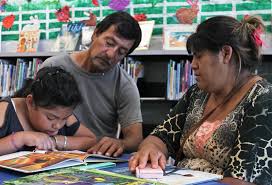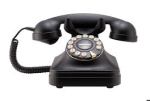No matter what your role in the life of middle grade readers: parent, teacher, writer, librarian or some combination of the above, the local independent bookstore can be your ally in getting good books into kids hands in a way that sustains and upholds the community in which those children live. Indies are great at finding that new voice and highlighting a rising star on the literary scene. Here’s their big secret–the booksellers actually read the books. And they know what their community values and is looking for.
Here are two examples from my own experience. One of the first booksellers I ever met was Laura DeLaney from Rediscovered Books in Boise, ID. She came up to me at a regional trade show three months before my first  book Heart of a Shepherd came out. She said, my community includes Mountain Home Airbase. I’ve never read a book that speaks to the military family experience like this one. I’m going to sell 100 copies of your book. And she did.
book Heart of a Shepherd came out. She said, my community includes Mountain Home Airbase. I’ve never read a book that speaks to the military family experience like this one. I’m going to sell 100 copies of your book. And she did.
Just for reference, most MG titles at a bookshop sell between 0 and 3 copies at any given location.
 The second example comes from the genius booksellers at Paulina Springs Bookstore in Sisters Oregon. They get a ton of tourist traffic in the summer and they sell mostly hiking and fishing guides although they are a terrific literary bookstore. They decided to put my Heart of a Shepherd and Hearts of Horses, an adult novel by Molly Gloss, in the trail guide section. And then while tourists were over there picking up maps, they’d say, here are two quintessential books about rural Oregon. One for you and one to read aloud to your kids around the campfire.
The second example comes from the genius booksellers at Paulina Springs Bookstore in Sisters Oregon. They get a ton of tourist traffic in the summer and they sell mostly hiking and fishing guides although they are a terrific literary bookstore. They decided to put my Heart of a Shepherd and Hearts of Horses, an adult novel by Molly Gloss, in the trail guide section. And then while tourists were over there picking up maps, they’d say, here are two quintessential books about rural Oregon. One for you and one to read aloud to your kids around the campfire.
 As a result of these two booksellers, and a bunch of others like them, my debut book, a heartfelt story about a ranch kid whose dad was deployed to Iraq, a title that was not a lead for my publisher and wasn’t even picked up by the big chains, earned out its advance in 10 months and went to 4 printings in it’s first year. Even more astonishing than that, it’s still selling, slowly but steadily, seven years later. All of that happened because indie bookstores saw something a little out of the ordinary that they knew would speak to their customers. Obviously I’m hugely grateful. But I’m also astonished that the power of Indies was still able to make a difference in 2009, one of the roughest years independent bookselling has ever endured.
As a result of these two booksellers, and a bunch of others like them, my debut book, a heartfelt story about a ranch kid whose dad was deployed to Iraq, a title that was not a lead for my publisher and wasn’t even picked up by the big chains, earned out its advance in 10 months and went to 4 printings in it’s first year. Even more astonishing than that, it’s still selling, slowly but steadily, seven years later. All of that happened because indie bookstores saw something a little out of the ordinary that they knew would speak to their customers. Obviously I’m hugely grateful. But I’m also astonished that the power of Indies was still able to make a difference in 2009, one of the roughest years independent bookselling has ever endured.
Whether you are an author or a librarian or just a parent looking for a good book for you kids, here are some things you can do to make the magic of independent bookselling work for you.
- Visit your local bookshop regularly and get to know the booksellers. They can be a great source of information about both undiscovered gems that will be perfect for your child or your students and also that overhyped book that just isn’t all that special. And they are genuinely interested in what you are looking for in books for yourself and for the children in your life.

- Go to readings. Online bookshops don’t bring great authors to your community, but a local bookshop can and they might even help you set up a school visit for your students if an author you love is in town. Let your local bookseller know you are interested so that they can keep you in the loop.
- Place school or book club orders. Most shops offer a teacher discount and will gladly work with you on ordering books for your classroom or library. Oh and guess what? When you order through a shop you don’t have to pay shipping.
- Are you a little tired of all the glittery, non-book, junk items that
 come along with your Scholastic book fair cases? Your local bookshop can probably host a school book fair. Every shop has a different policy, obviously, but talk to your local bookstore about hosting a book fair in the shop. They can usually apply the teacher discount to everyone who comes to the fair or give the school a credit afterward to get free books.
come along with your Scholastic book fair cases? Your local bookshop can probably host a school book fair. Every shop has a different policy, obviously, but talk to your local bookstore about hosting a book fair in the shop. They can usually apply the teacher discount to everyone who comes to the fair or give the school a credit afterward to get free books. - Local merchants are the ones most likely to support local fundraisers so if your school is doing an auction this year (and honestly who isn’t?) I bet your local bookstore will donate to your cause. Not only that, their employees live in your community and pay taxes there, and they pay business and property taxes in your school district.
 Lost a treasured favorite? Wondering when a book that would be perfect for a whole-class read is coming out in paperback? Give your indie bookshop a call. They can look things up in a publishers data base which is not available to the general public.
Lost a treasured favorite? Wondering when a book that would be perfect for a whole-class read is coming out in paperback? Give your indie bookshop a call. They can look things up in a publishers data base which is not available to the general public.- Feeling a little stale in your own writing? Need some encouragement? Go listen to an author talk about her new book. Authors are generous. Eager to share what they’ve learned about the writing process and the labyrinthian world of publishing. I host author events at the indie bookstore where I work several times a month and I learn something every time, even when the author writes something that is a thousand miles from my own genre.
- And one more thing. Buy a book. Because if you want that bookstore to still be there when you are a published author, if you want your kids and students and grandkids to know the particular peace of walking into a bookshop where they are free to browse what ever strikes their interest and not just what’s the latest hot property, then give that shop your patronage as regularly as you can. It doesn’t have to be a lot, but when everybody does a little, it goes a long way.













